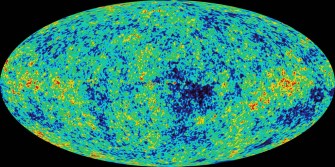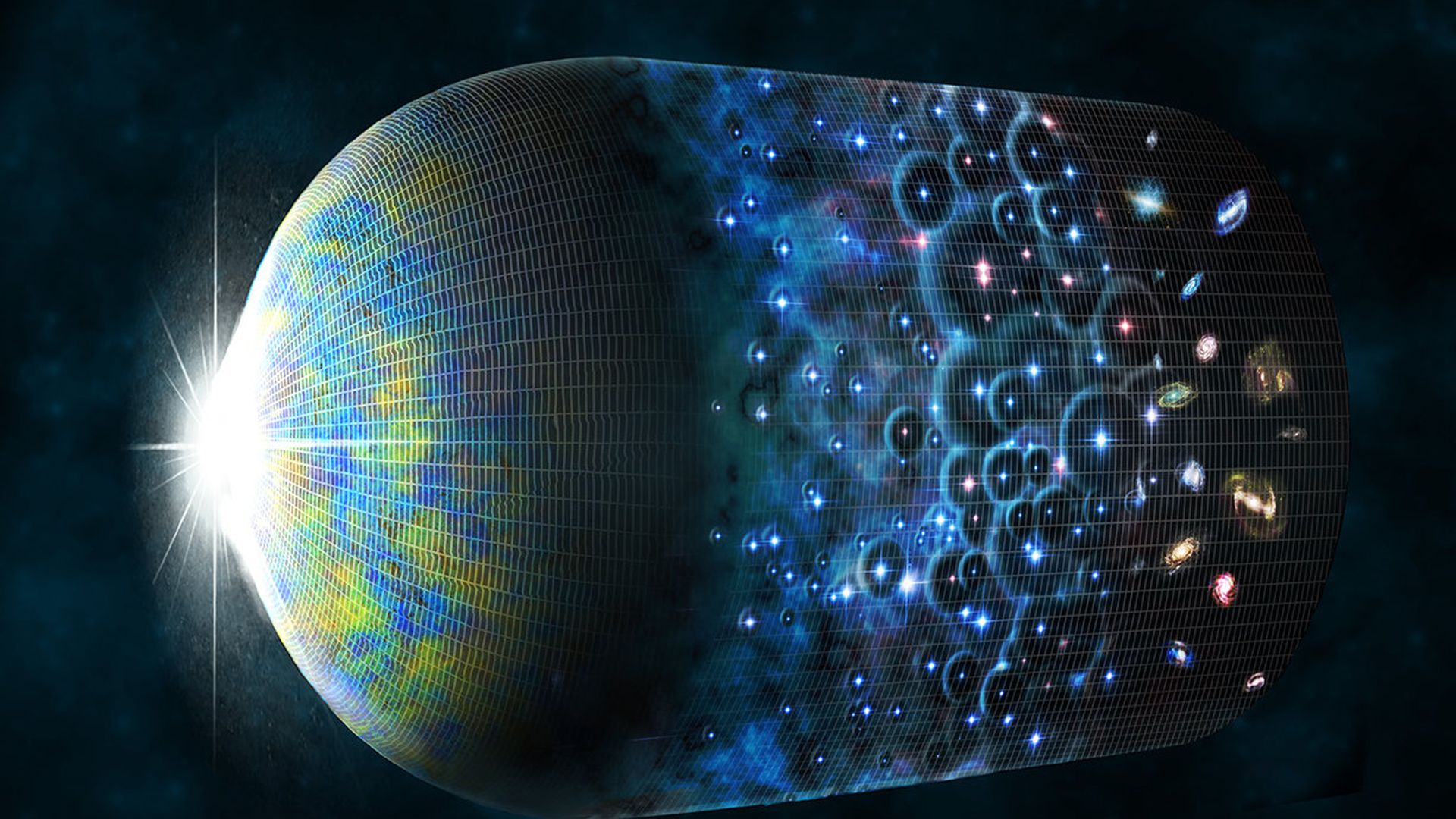Where Did the First Light in the Universe Come From? Astrophysicists Now Know

Where the first light in the universe came from has stymied scientists, until very, very recently, with the advent of the space telescope. Today, astrophysicists say, the answer may be best described through an understanding of the conditions present in the early universe, starting just a fraction of second after the Big Bang.
Studies of the Cosmic Microwave Background (CMB), tell us that light predates matter and even neutral particles themselves. The CMB is the afterglow of the Big Bang still found everywhere in the universe, as the background scenery to the intergalactic pagentry before us. It isn’t stationary. Such waves bounce around everywhere, including into the Earth, where they can be detected.
The European Space Agency’s (ESA) Planck space telescope, launched in 2009, has studied the CMB extensively. As a result, ESA researchers found that the rate of universal expansion is slightly slower than first thought. The universe is also older than previous estimates. Our understanding today is that it’s 13.78 billion years old.

The cosmic microwave background or the “universe’s baby picture.” NASA & Caltech.
In 2013, researchers on the Planck project announced they had found out how the earliest light must’ve formed. Right after the Big Bang, the universe was filled with subatomic particles, both matter and antimatter, bumping into each other at a balmy 2,700ºC (4,892ºF). So when an antimatter particle bumps into its opposite, both particles vanish. The going theory that there were slightly more matter particles than antimatter ones, which explains the absence of antimatter in the universe.
Meanwhile, photons, protons, and electrons were all crashing into each other, too. When protons and electrons meet, they form hydrogen, releasing light. This is how the first light in the universe was born, about 380,000 years after the Big Bang. Soon, the universe went through a period of rapid expansion. This stretched out the first light’s wavelengths making it into microwaves, what is today called the CMB.
Researchers on the Planck project have now looked at different regions of the CMB for extremely subtle changes in density and temperature, as well as how it interacts with nearby dust clouds and other bodies, to give us clues into how the universe formed.
So what caused this hot, dense soup of radiation and particles to spread out, causing what’s known as rapid cosmic inflation? Here’s where things get a little fuzzy. Something needed to occur, a period of intense energy buildup that wasn’t caused by matter, antimatter, or radiation. Scientists suggest it must’ve been some kind of super-intense, dark energy event.

Portion of the CMB mapped by Planck by the ESA. Getty Images.
As it expanded, the universe flattened and cooled. What we’re left with is the universe we’re familiar with today, with the same conditions throughout, denser in some areas and less dense in others. As hydrogen gas further accumulated, it formed a dense cloud which obscured all light.
Over a period of hundreds of millions of years, the universe developed in total darkness. Within it, the first stars, star clusters, and superstar clusters formed. A type of radiation known as the Lyman continuum is emitted from stars, and over the next billion years, this reionized the hydrogen, which eventually lifted the “dark” period, allowing light to travel freely once again.
European Southern Observatory (ESO).
Researchers on the Hubble telescope project have also lent insight into how the earliest light came into being. Sanchayeeta Borthakur of Johns Hopkins University, was the lead author of one study. She and her team performed observations on a nearby “starburst galaxy,” known as J0921+4509. They wanted to see how the Lyman continuum wore away this universe-wide fog.
J0921+4509 is a very compact galaxy, approximately 3 billion light years from the Milky Way. It’s ensconced in a blanket of dust clouds, which causes it to give birth to a large number of stars. A star is born deep in the dense center of such a cloud, where temperatures can be as low as -262 ºC (-440 ºF). These clouds are riddled with holes caused by radiation, emitted from the stars they conceal. According to Dr. Borthakur, this process mirrors how early radiation burnt off the hydrogen fog during the era of reionization.
Careful observations with the Hubble and Planck telescopes have made astronomers, cosmologists, and astrophysicists, far more confident in the Big Bang theory and what happened afterwards, in the earliest twilight of the universe’s development. Further insights may be on the horizon. Pretty soon the James Webb Space Telescope will be set among the stars. This will allow scientists to peer back over 13.5 billion years, to observe how the first stars and galaxies formed.
To learn more about what the early universe was like, click here:





